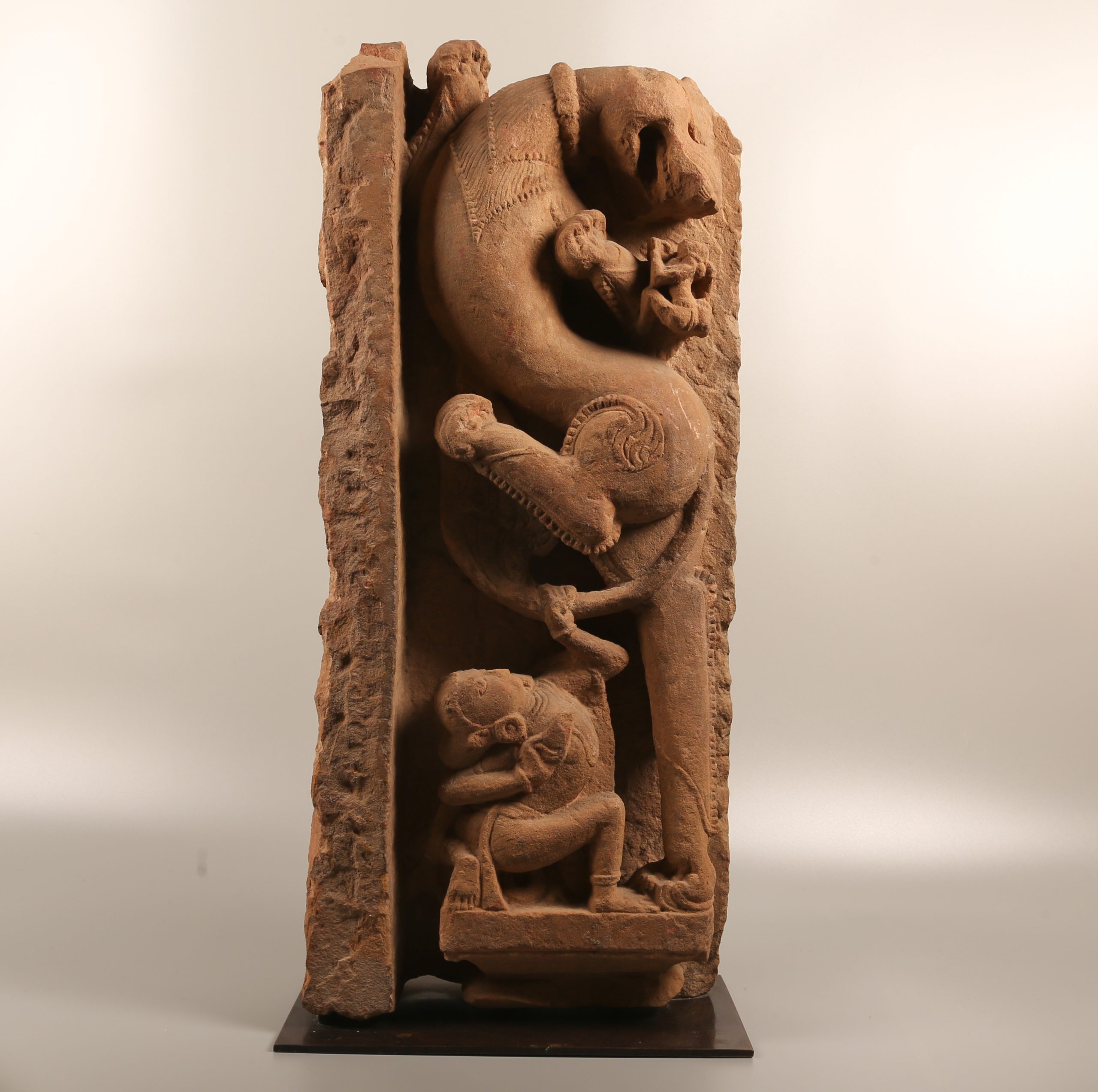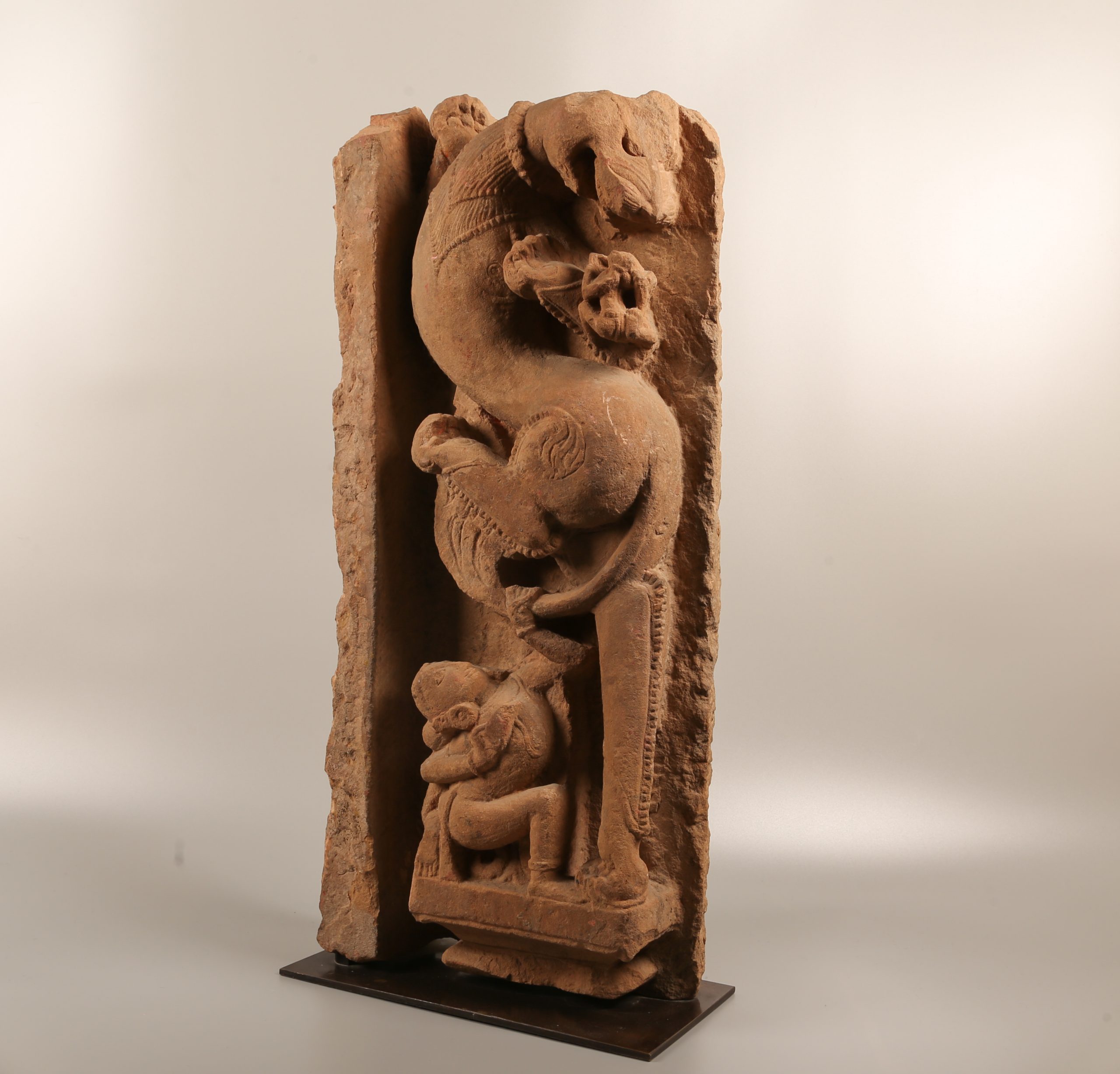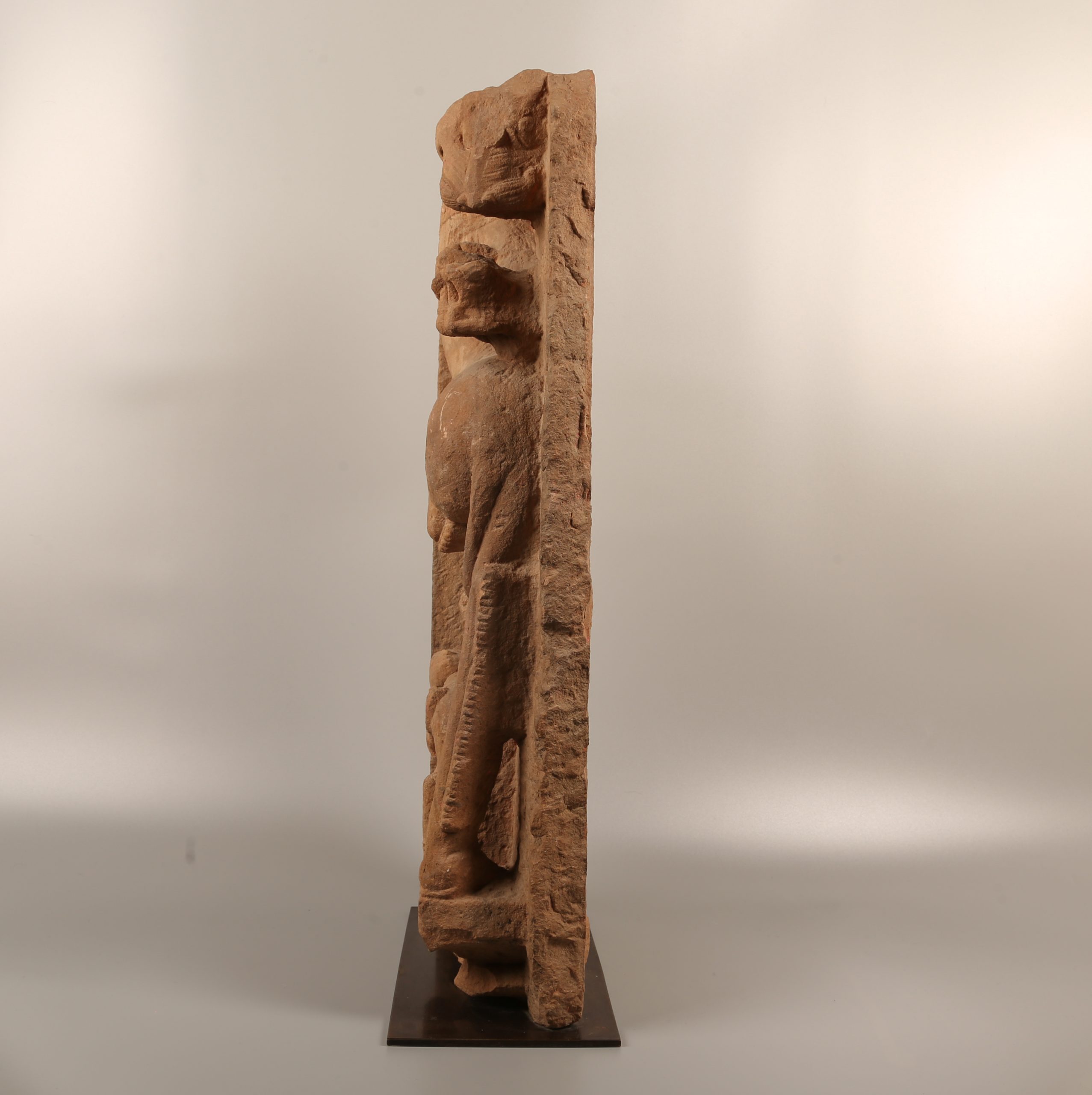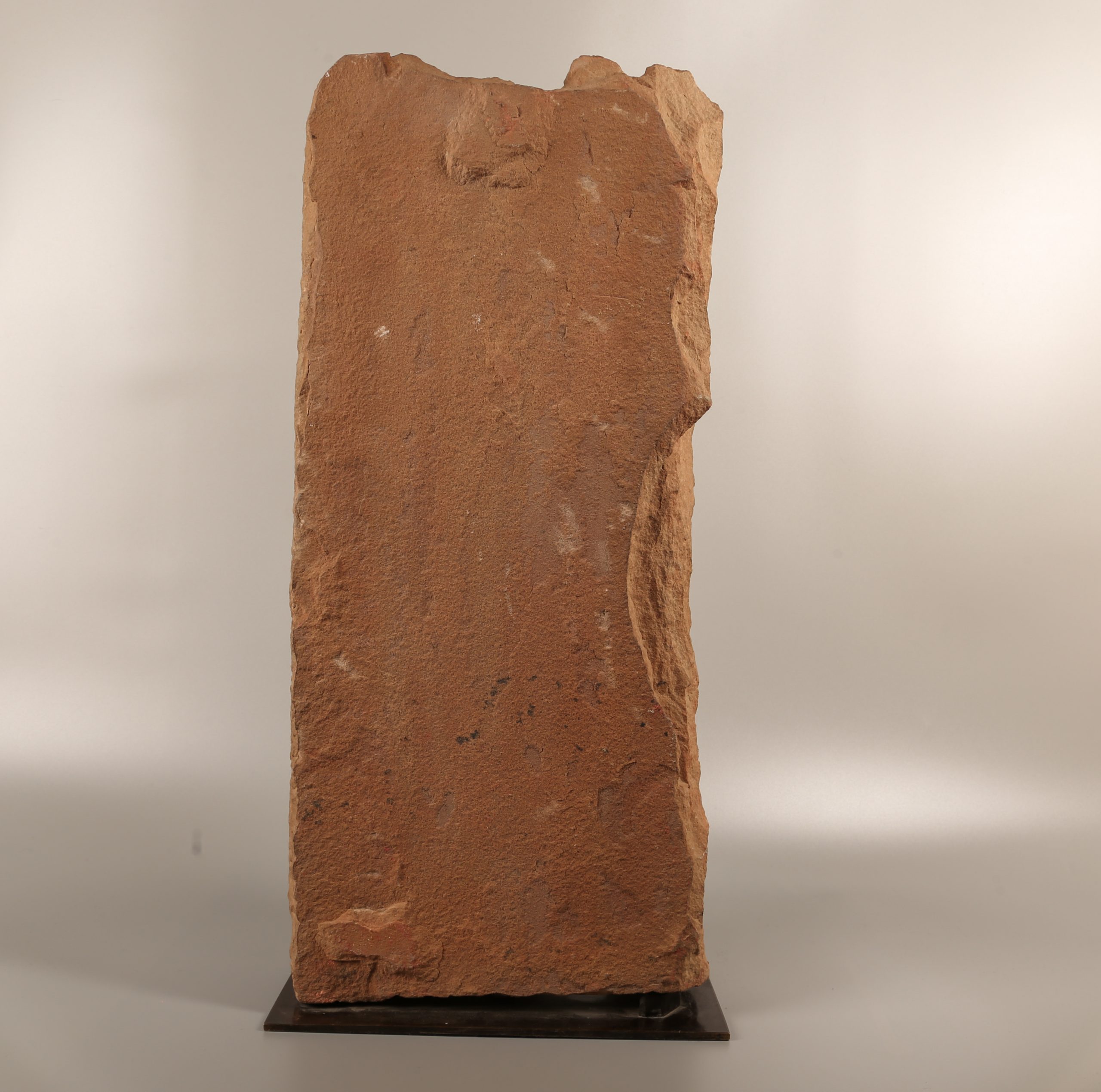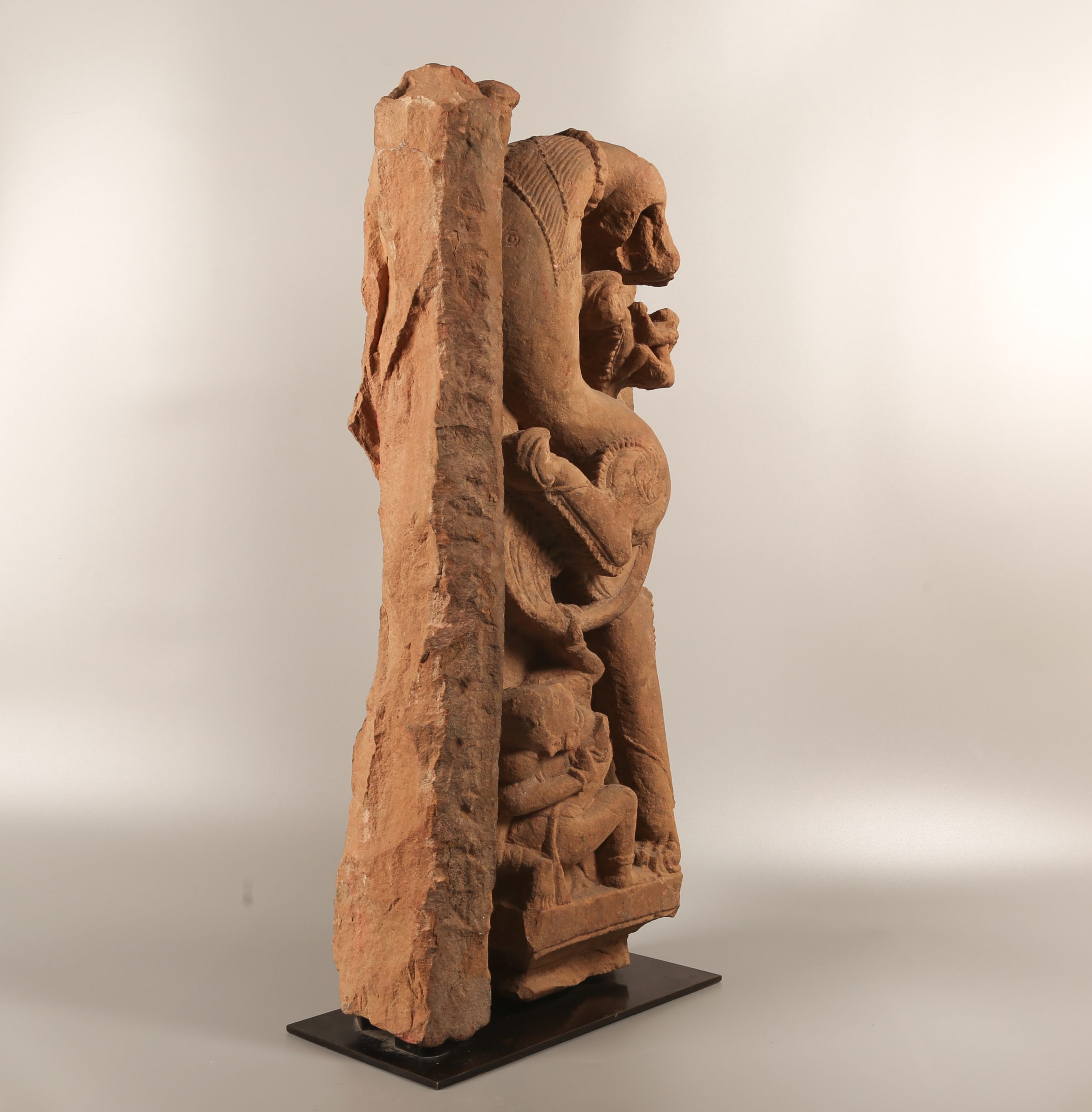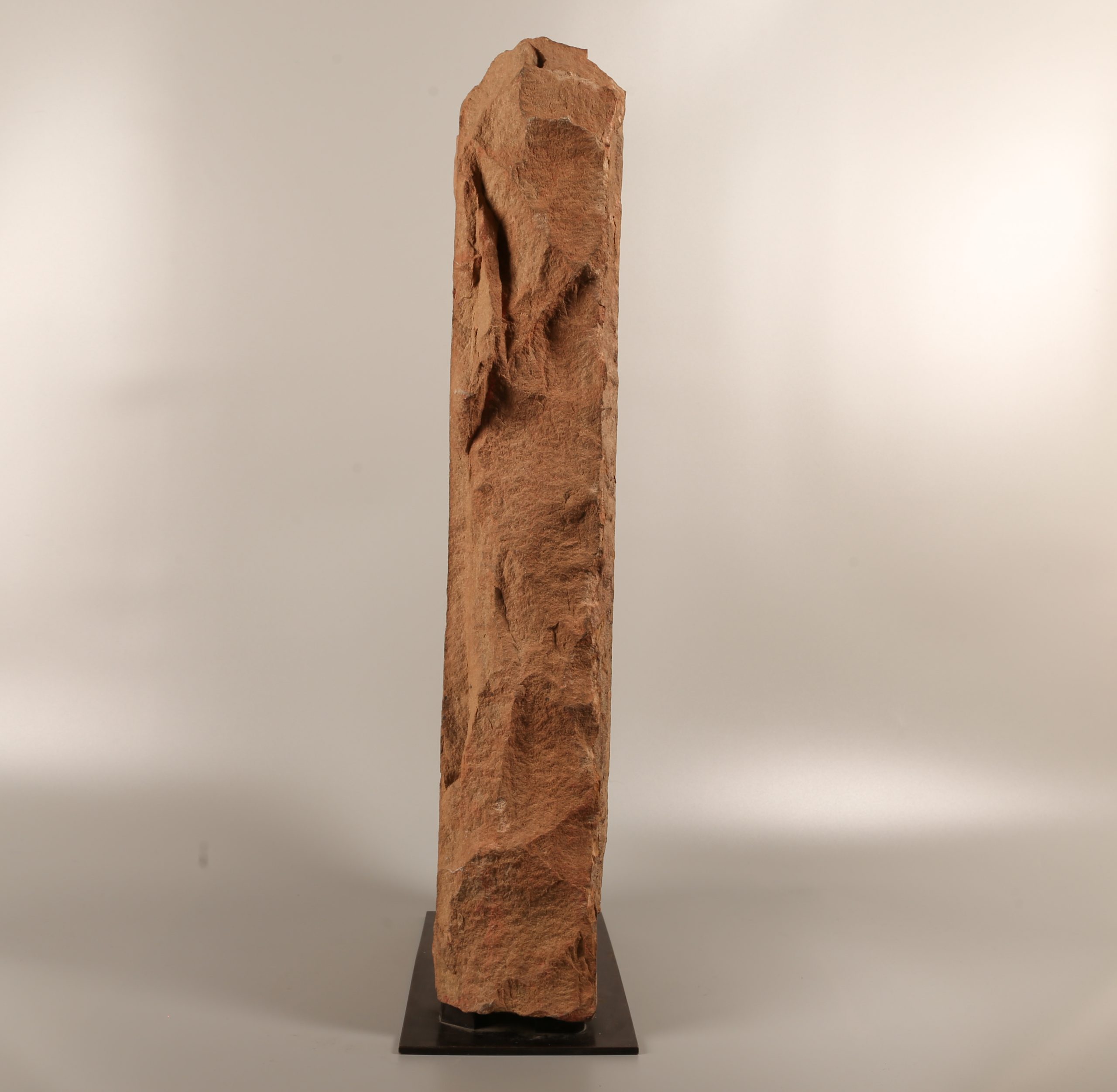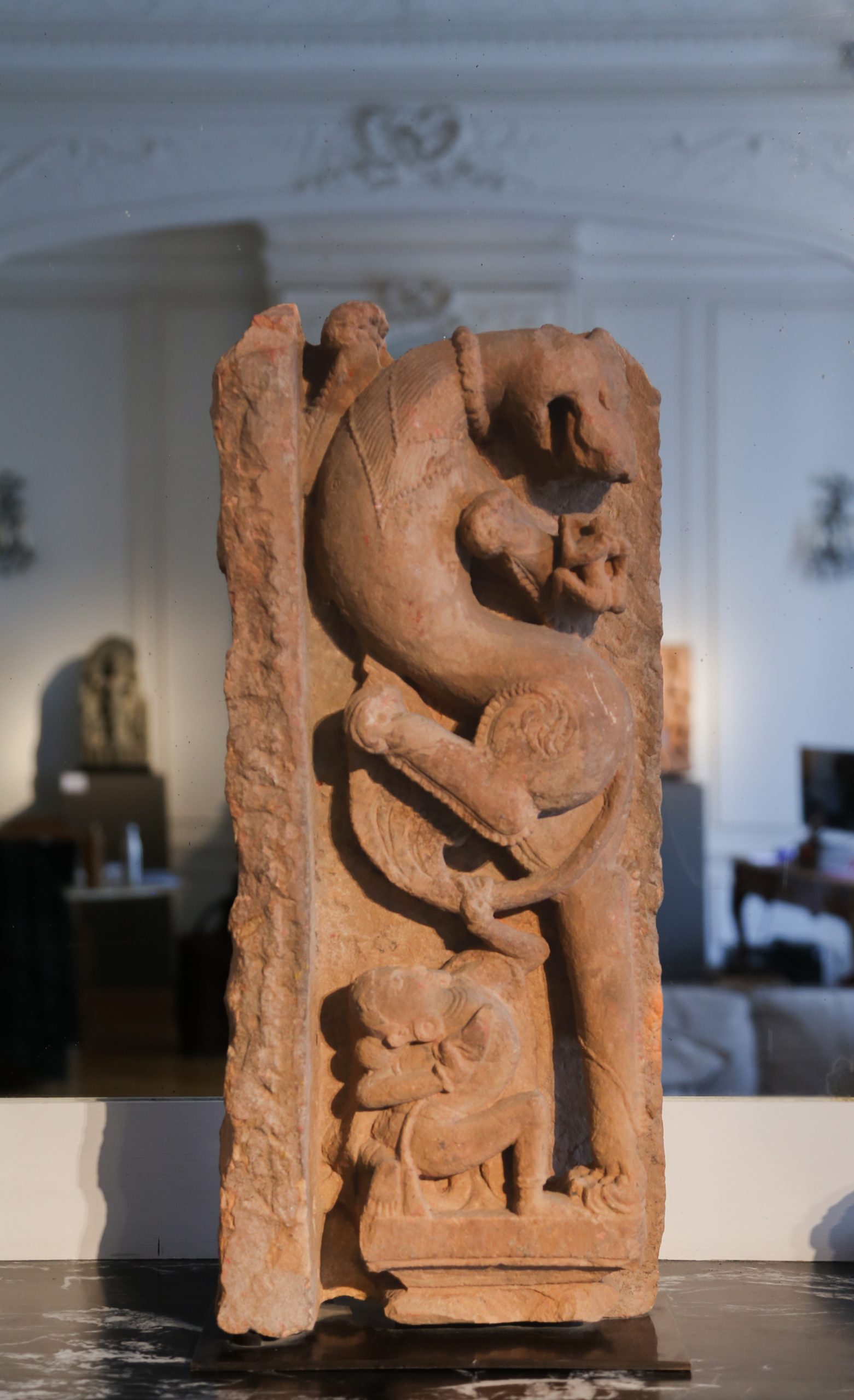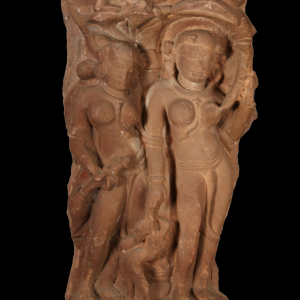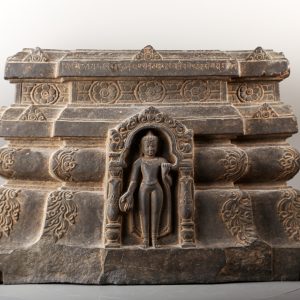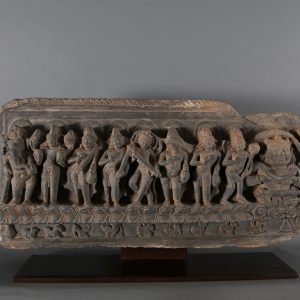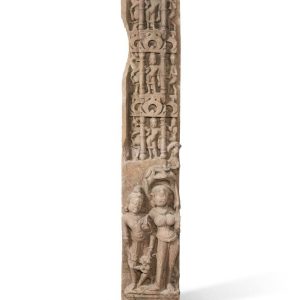Lion-headed Vyāla
12 000,00€
Description
A skilfully composed battle scene
The Vyāla, a mythical animal that is very present in Indian art, is a graceful and very powerful creature. With its contorted, curved body, this lion-headed Vyāla wears a beaded necklace and its mane of hair is clearly visible. The animal appears in motion, its position is dynamic, arched and proud. It seems to be fighting with the two figures present, one on its head and the other on its paws. Indeed, a small figure sitting on the lion’s rump is facing it directly, while a second, larger figure is standing hunched over, face turned towards the sky, and grabbing the beast by the tail. This position also gives him a very graceful, almost dancing, movement and makes him look as if he too is participating in the fight.
The Vyāla, emblem of the Indian fantasy repertoire
This very beautiful piece appears complete and is quite comparable to the leogriffs of the Khajurāho temples. The hypothesis of the fight refers to a popular theme found on several occasions in Khajurāho. As Gilles Béguin reminds us in his study of the site, this undoubtedly refers to an unknown legendary context, a local tradition, reporting that the princes of the Candella family had to kill a lion in their sixteenth year.
A delicate aesthetic that magnifies religious architecture
Carved in very high relief, this Vyāla is a fine example of the ornamental sculpture of the period. The work gives an impression of fluidity and ease in the movements of its protagonists. This impression is reinforced by the play of light and shadow provided by the high relief, bringing contrast and vigour to the scene. We admire their undulating gestures which perfectly convey the power of the animal as well as the great agility of the small characters. This charismatic mythical lion would have adorned a pillar of a mandapa – a hall with columns – or a gallery of a Hindu temple.
Provenance : French private collection, 1999 (by repute).

